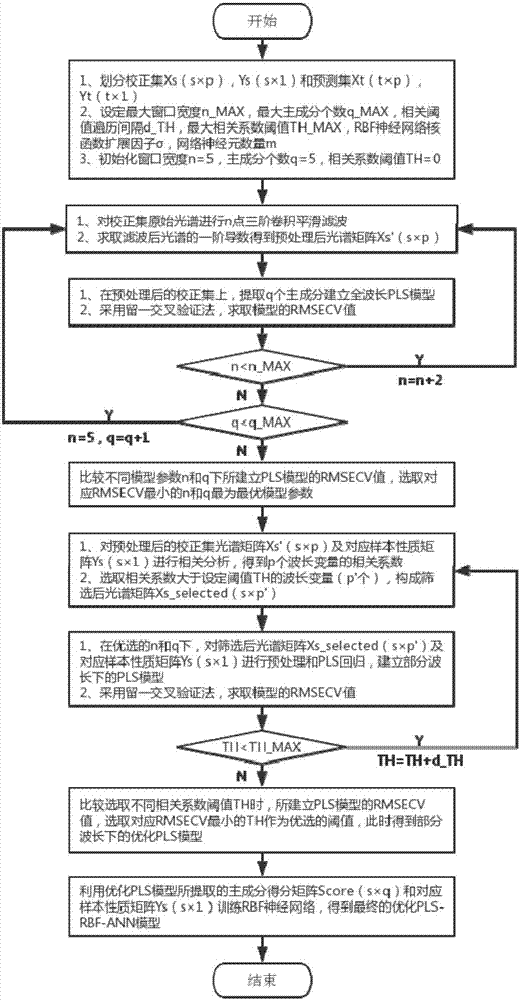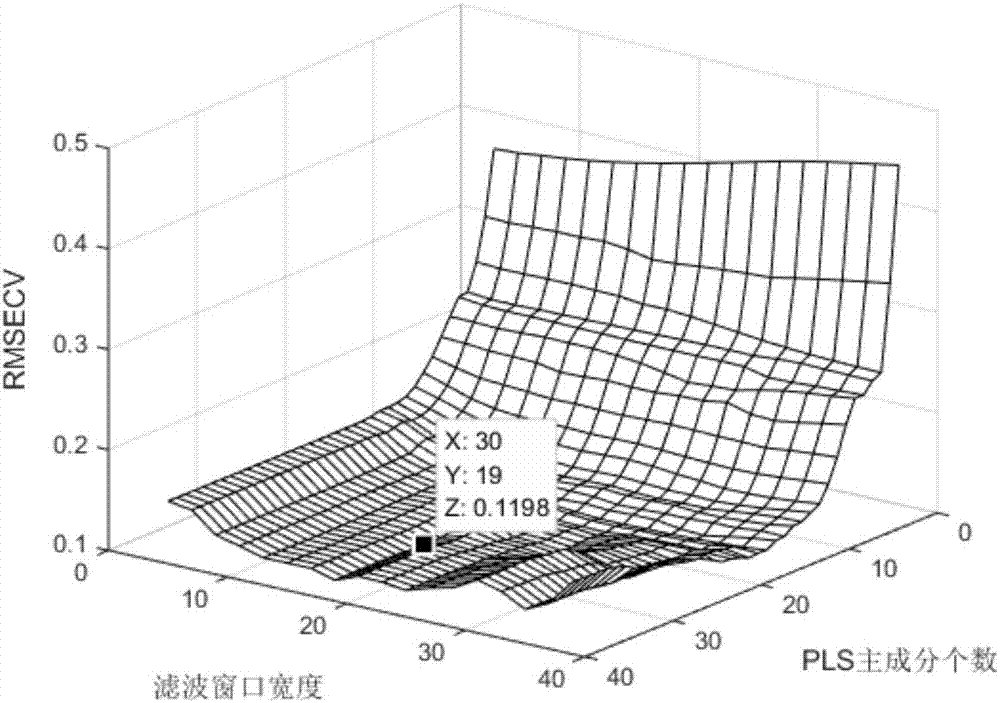Near infrared spectrum analysis method based on CC-PLS-RBFNN optimization model
A near-infrared spectrum and optimization model technology, applied in the field of near-infrared spectrum analysis based on the CC-PLS-RBFNN optimization model, can solve the problems of reducing the robustness of the model, affecting the robustness and accuracy of the model, and failing to complete it. The effect of reducing nonlinear regression residuals, improving robustness and accuracy, and improving model accuracy
- Summary
- Abstract
- Description
- Claims
- Application Information
AI Technical Summary
Problems solved by technology
Method used
Image
Examples
Embodiment Construction
[0032] The specific implementation of the present invention will be described in detail in conjunction with the accompanying drawings and specific examples of near-infrared spectral analysis.
[0033] figure 1 The near-infrared spectrum analysis method based on the CC-PLS-RBFNN optimization model proposed for the present invention.
[0034] In this specific example, the method of the present invention is verified by using the near-infrared spectrum data sample of corn kernels. The data set contains 80 samples measured by near-infrared spectroscopy, the mass content of starch ranges from 0% to 100% (w / w), and the relationship between near-infrared spectroscopy and starch content in corn kernels is investigated. In the sample set, the scanning range of the spectrometer is 1100-2498nm, and the scanning interval is 2nm, that is, each spectral sample data contains 700 sampling wavelengths.
[0035]For the corn grain near-infrared spectrum data sample, implement the near-infrared ...
PUM
 Login to View More
Login to View More Abstract
Description
Claims
Application Information
 Login to View More
Login to View More - R&D
- Intellectual Property
- Life Sciences
- Materials
- Tech Scout
- Unparalleled Data Quality
- Higher Quality Content
- 60% Fewer Hallucinations
Browse by: Latest US Patents, China's latest patents, Technical Efficacy Thesaurus, Application Domain, Technology Topic, Popular Technical Reports.
© 2025 PatSnap. All rights reserved.Legal|Privacy policy|Modern Slavery Act Transparency Statement|Sitemap|About US| Contact US: help@patsnap.com



